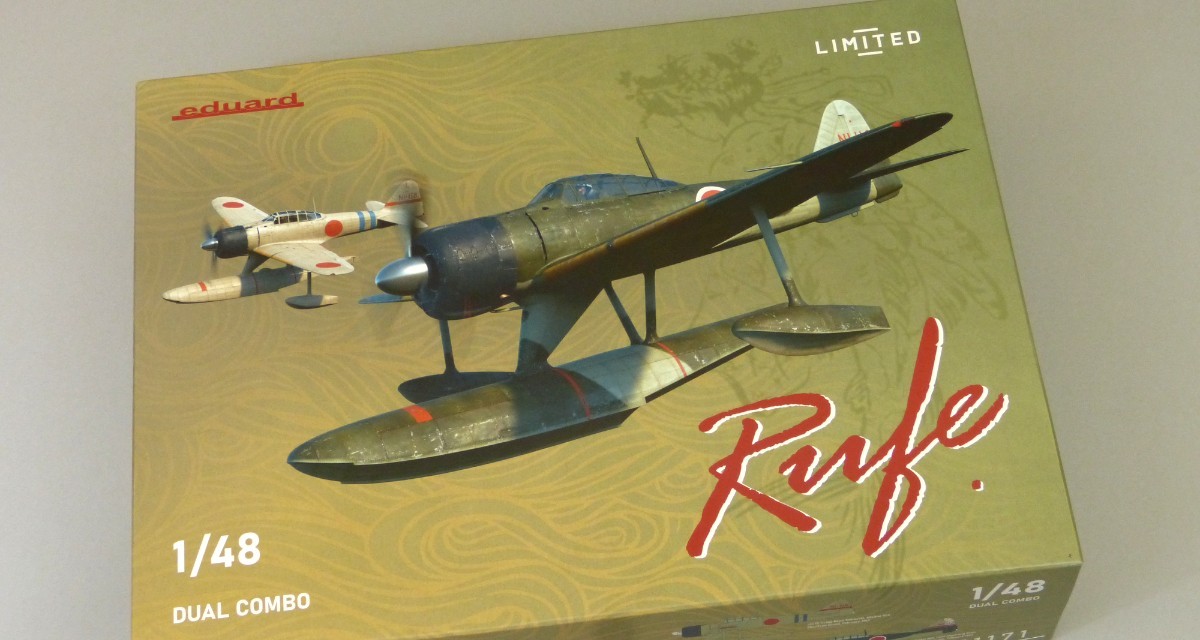
Eduard's first boxing of the Rufe is a very impressive limited-edition Dual Combo, containing parts for a pair of aircraft and their beaching dolleys.
The kit arrives in a large top-opening box adorned with an attractive illustration of a pair of aircraft that give a tempting clue as to the range of colour schemes offered.
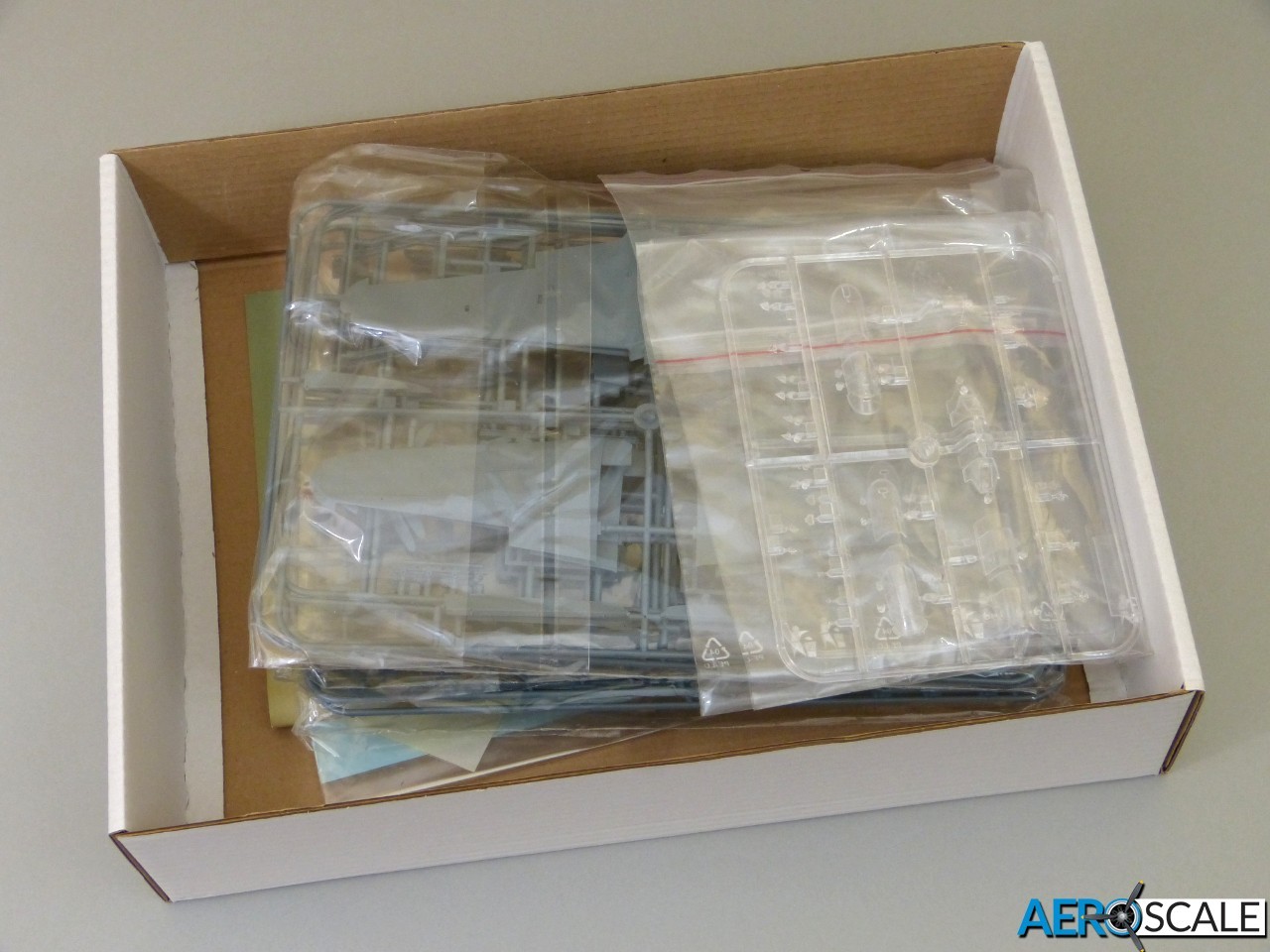
Each aircraft in the Dual Combo comprises:
122 x grey styrene parts (plus 28 not needed)
13 x clear styrene parts (plus 14 not required)
68 x photoetched parts

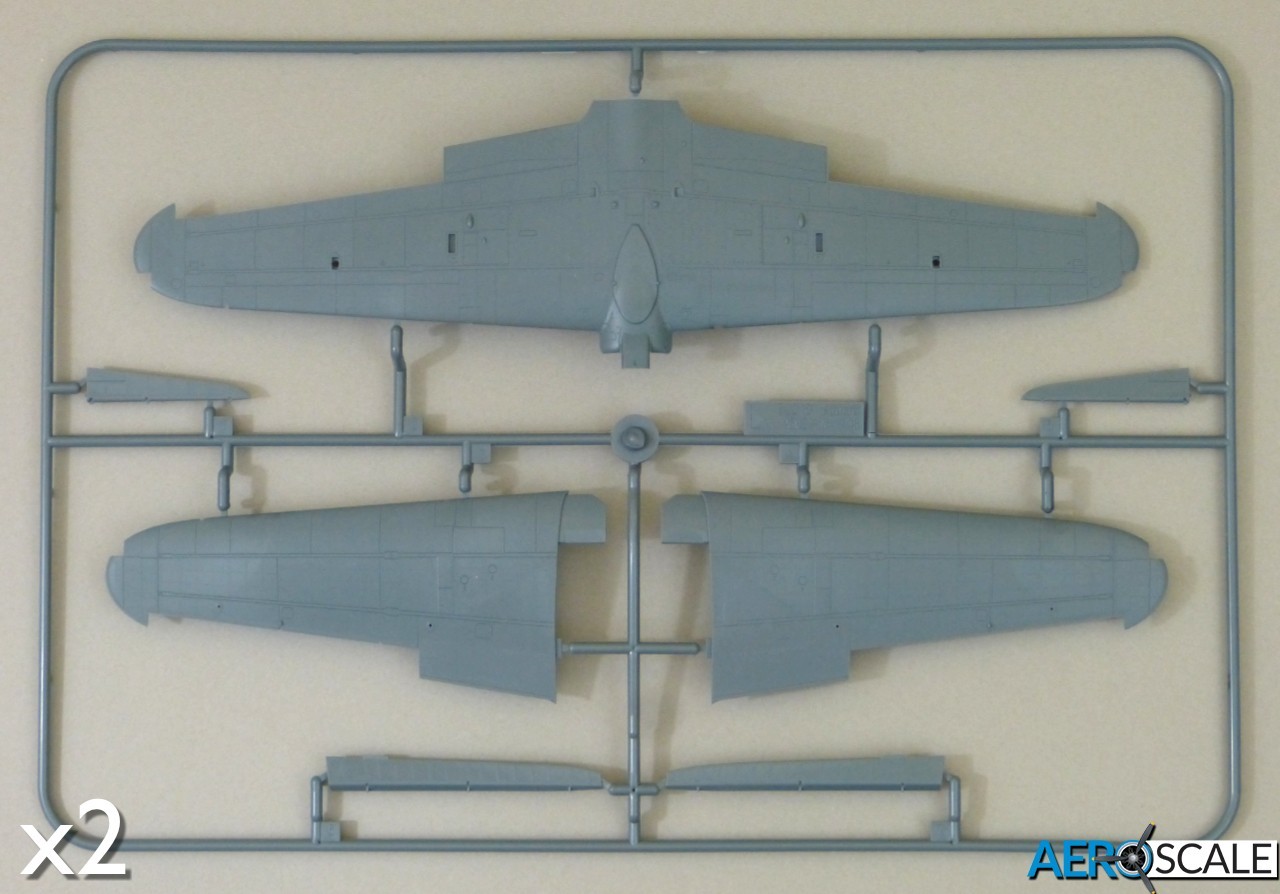

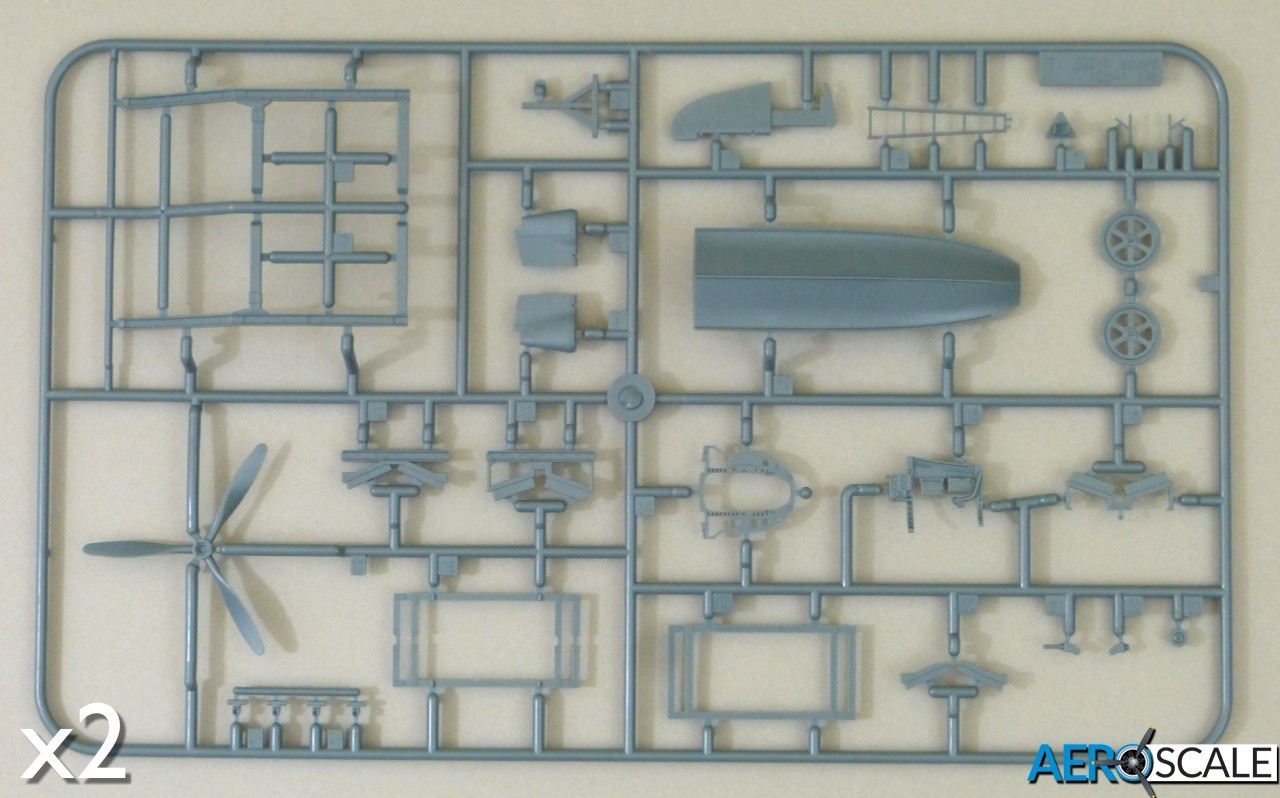
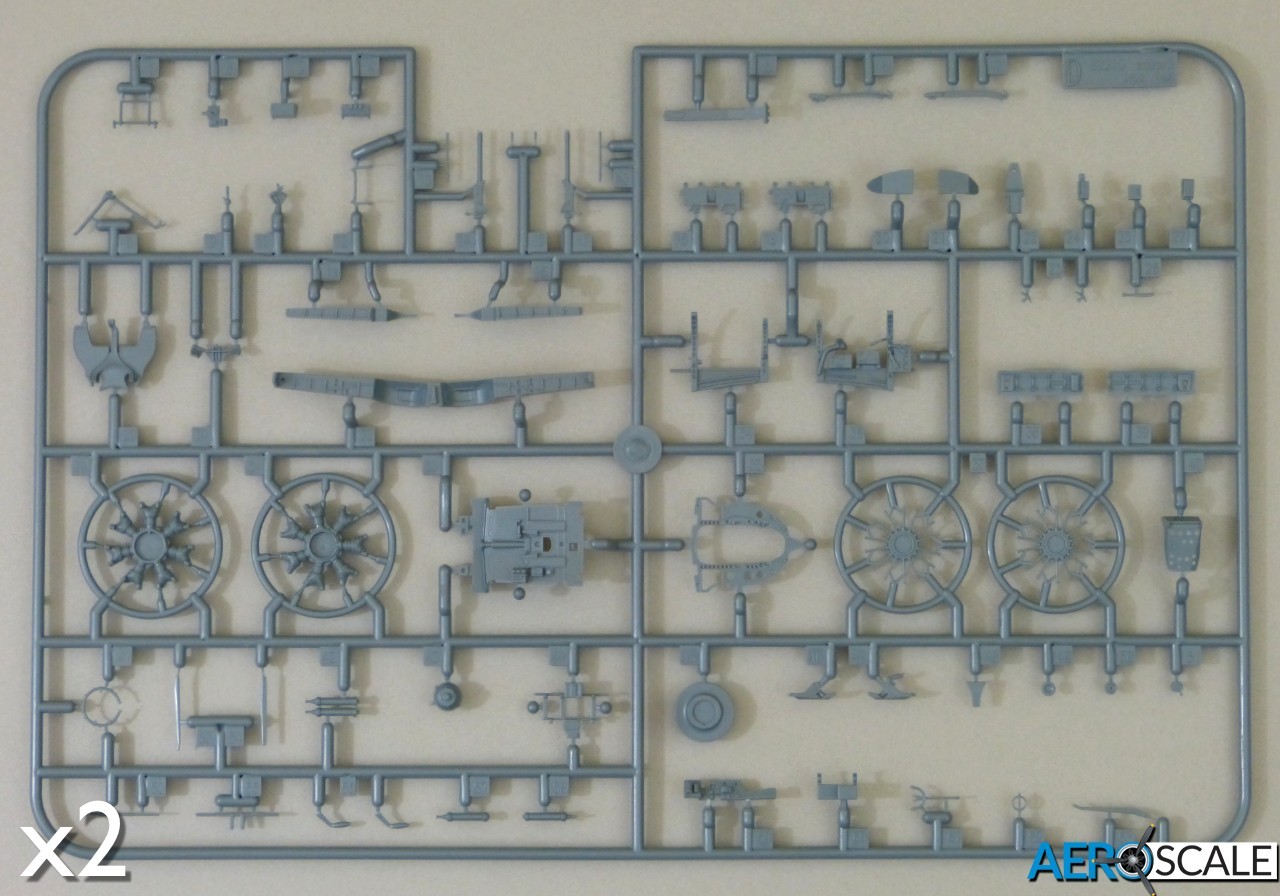
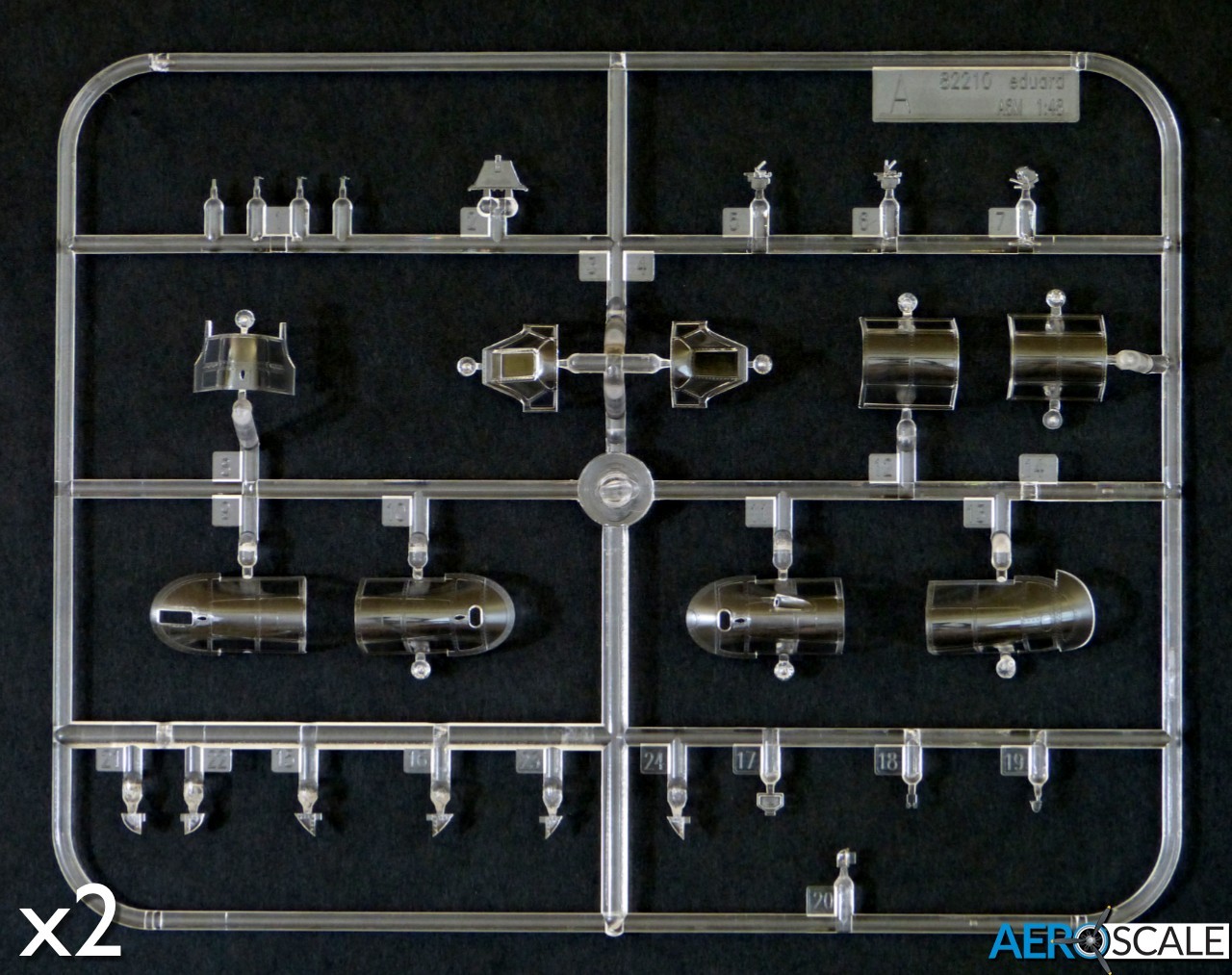
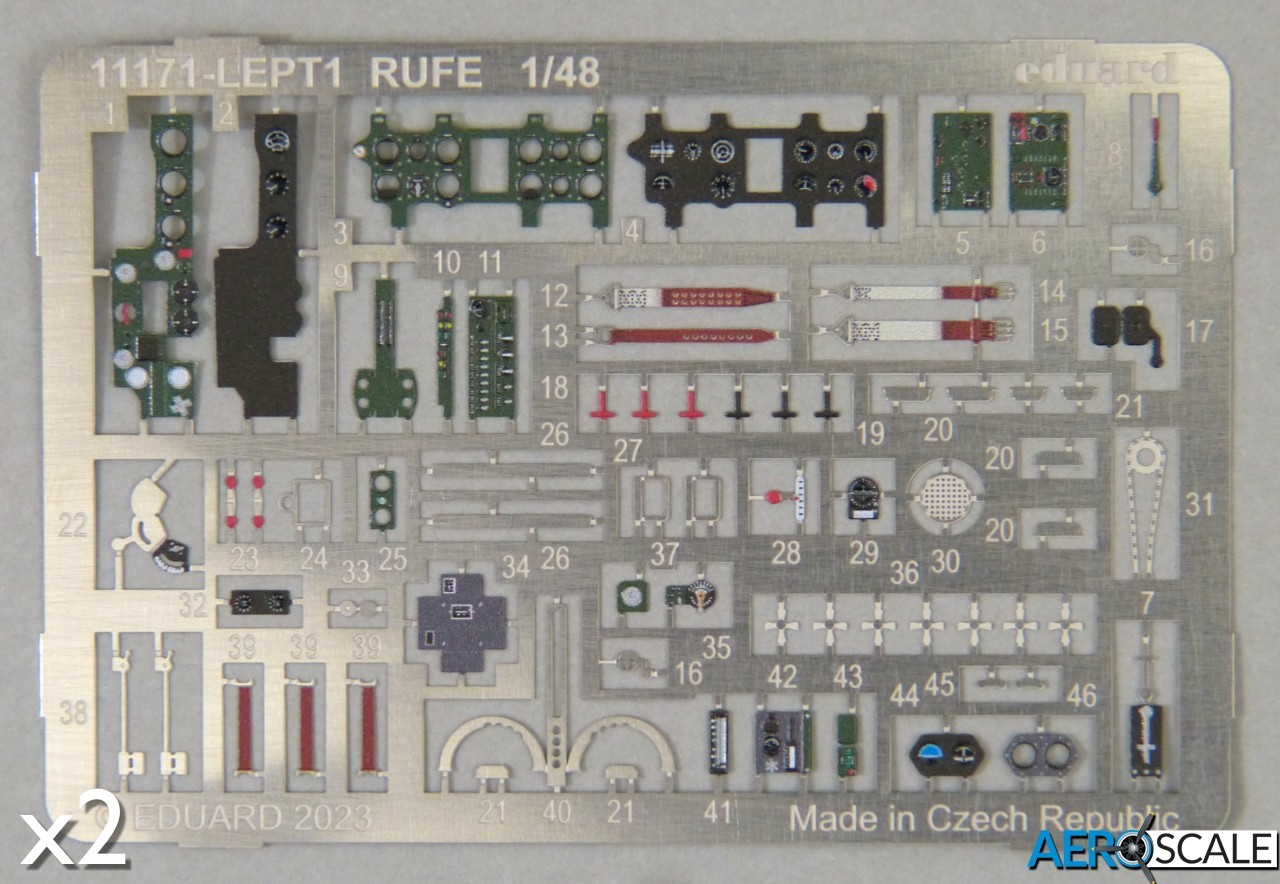
So, over 200 parts for each of the Rufes, and add to these a shared sheet of washi-tape painting masks for the canopies and the wheels of the beaching dolleys, plus decals for 8 colour schemes.
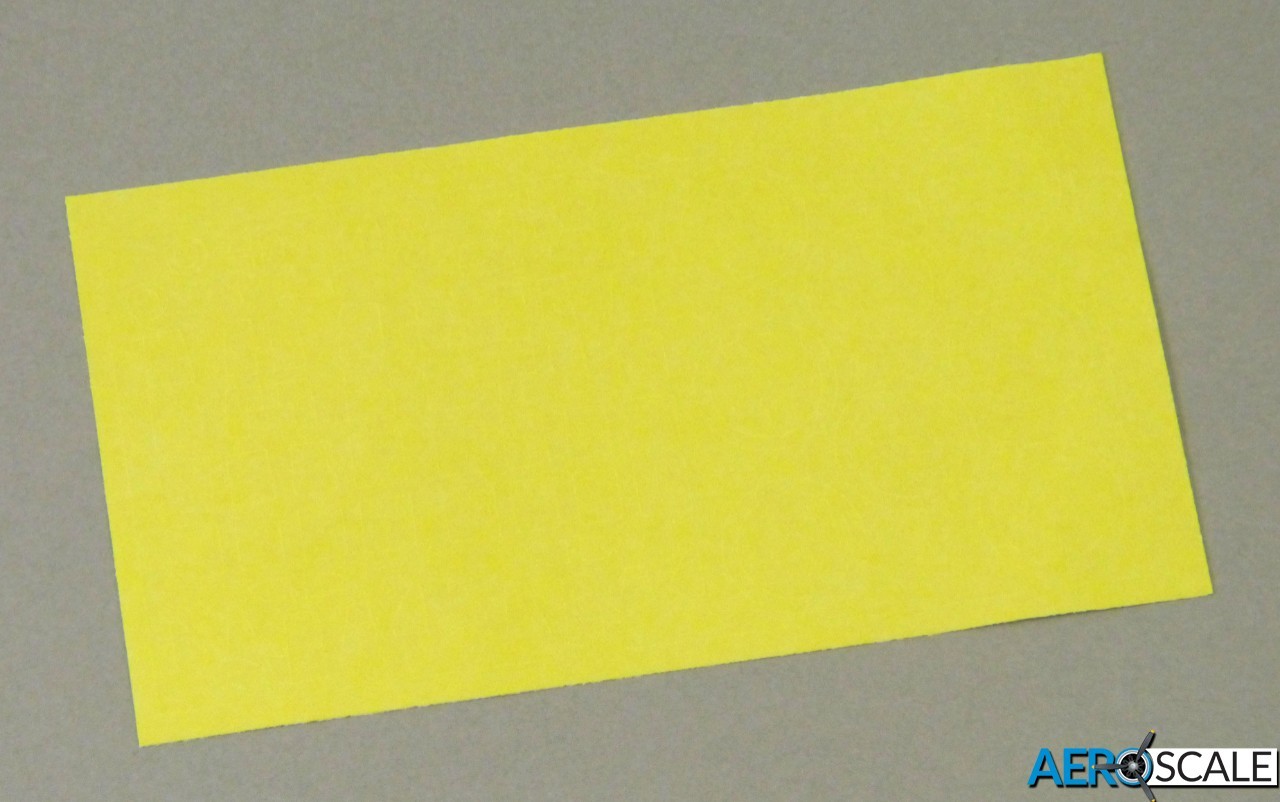
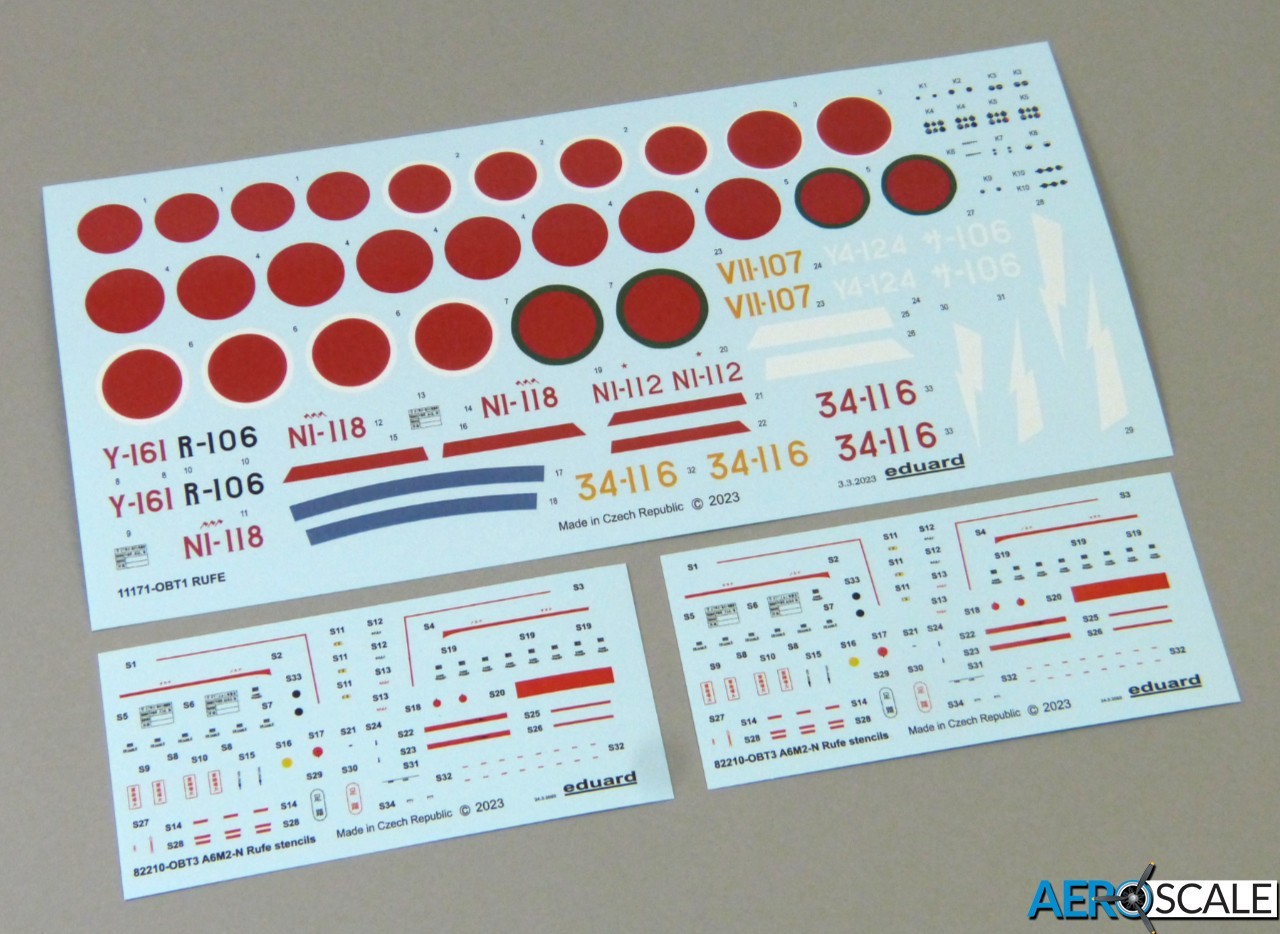
The Rufe uses completely new runners for the major parts and, as you'd expect, the moulding and detail is superb throughout. The clear parts and most of the cockpit components are shared with Eduard's earlier Zeros, but there are still a couple of changes in the cockpit.
The overall finish features current state-of-the-art panel-line engraving and delicately embossed rivets for the main airframe. The fabric-covered control surfaces have a nicely taught look.

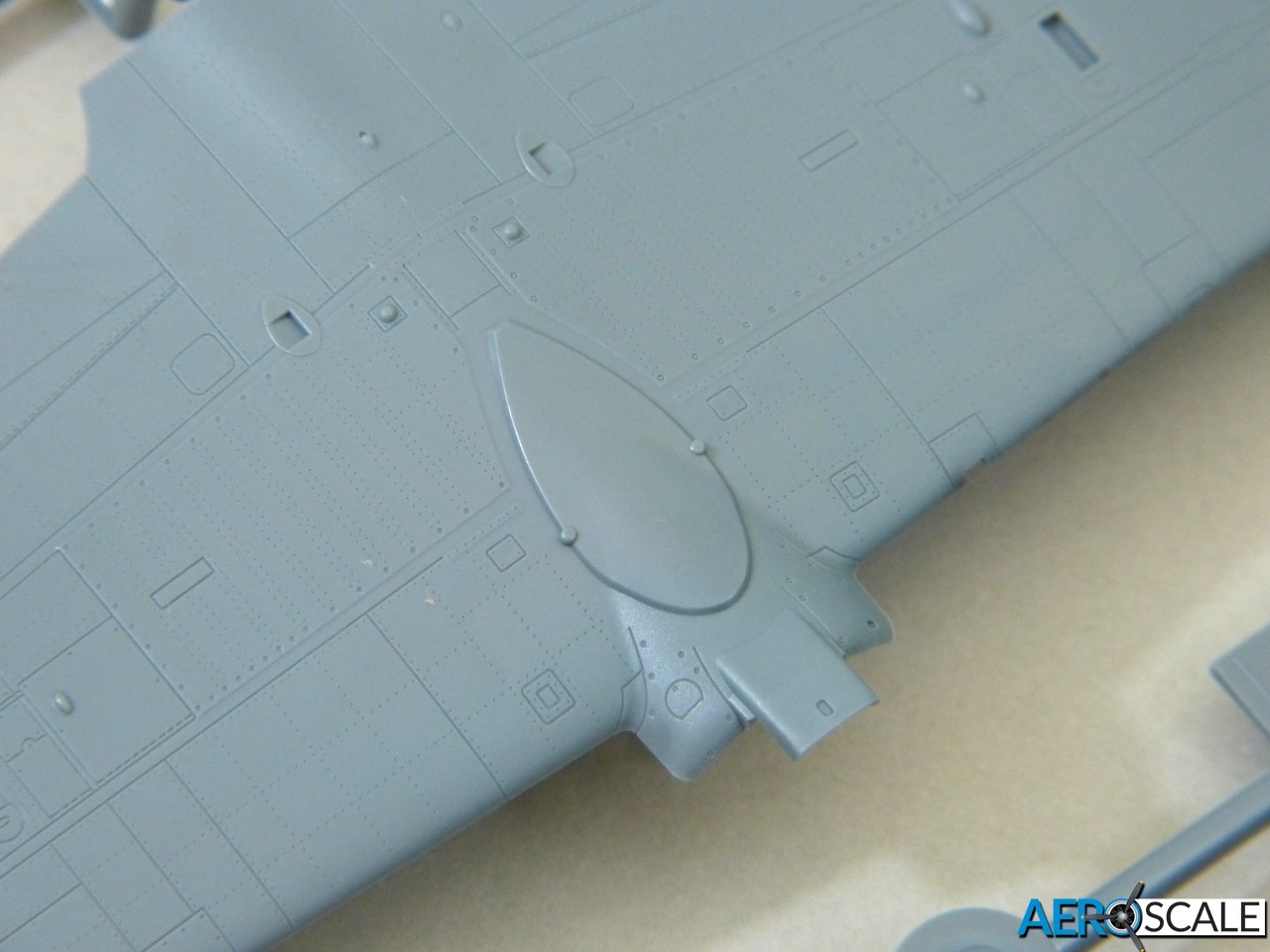

A Few details
The main difference between the Rufe and standard Zeros is obviously its floats; a centreline main float, plus outriggers under the wings. These are beautifully moulded, with an identical surface finish to the rest of the airframe. Obviously, the wing itself is new too, because the retractable undercarriage is deleted. The oil cooler is mounded in the centre float's pylon, and this has an etched grill and inlet vanes.
Eduard point out that weight is needed in the nose of the centre float, but fail to say how much. Thankfully, there's plenty of room in the float and the bottom of the float is a separate piece, so you can do a test-fit to judge how much weight to add.



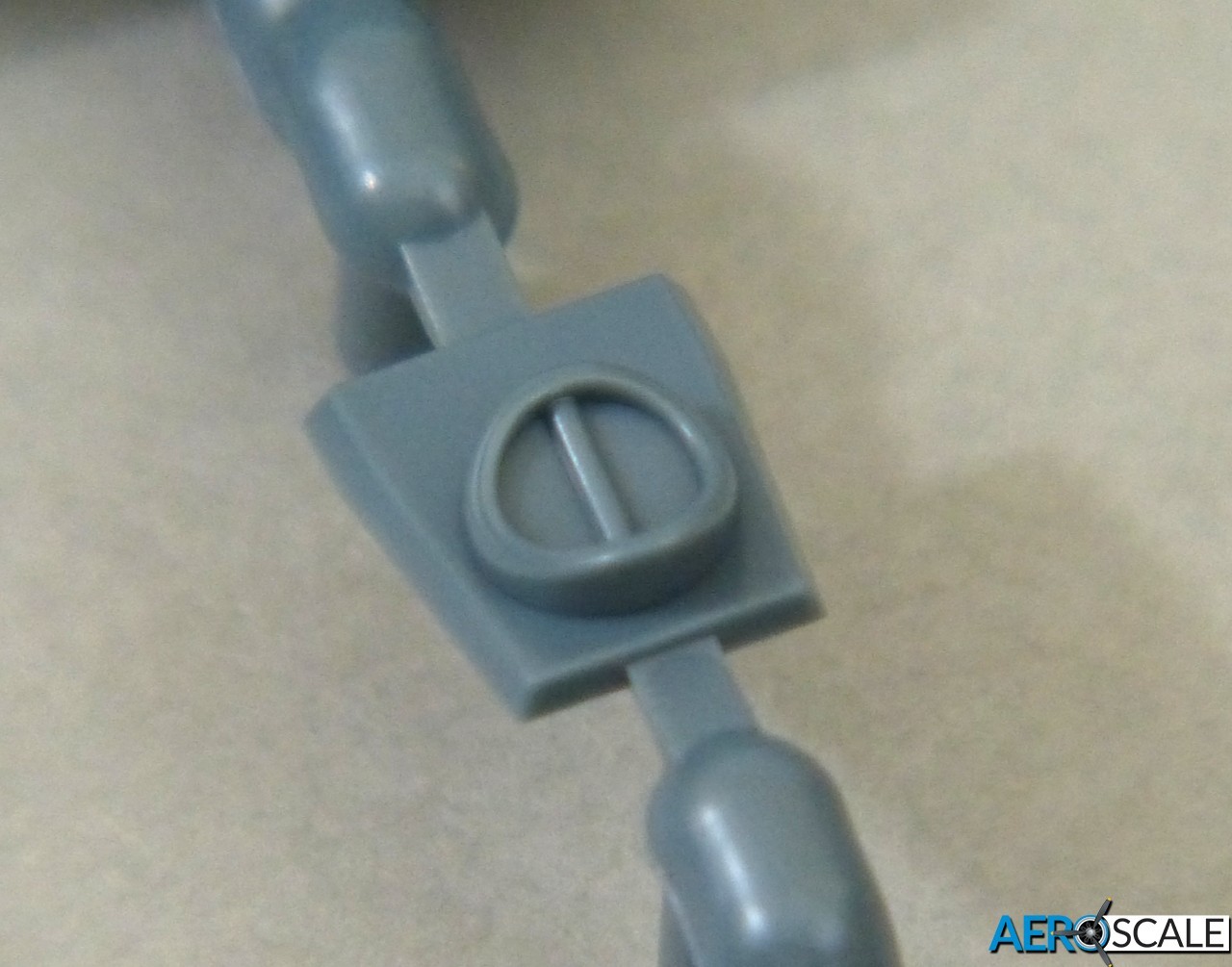

As with the standard Zero, Eduard's Rufe features a beautifully detailed cockpit, comprising around 65 parts if you use all the photoetched details. Alternatives are provided for the instrument panel and consoles, with decals instead of the pre-coloured etched parts if prefer to use the styrene parts. Personally, the photoetched versions win for me - you just need to be prepared to devote a little trial and error to ensure the best paint match for the pre-coloured parts.
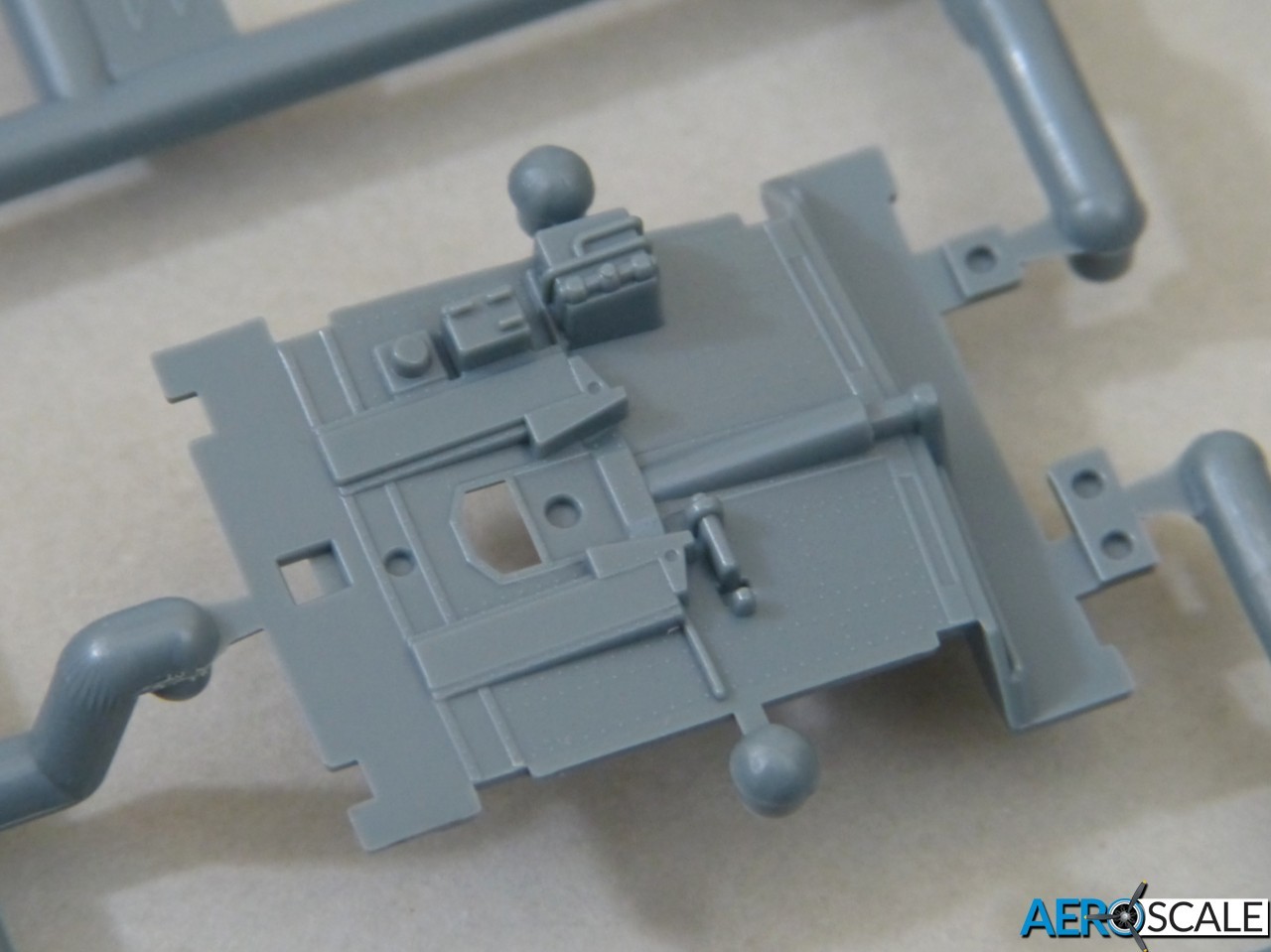




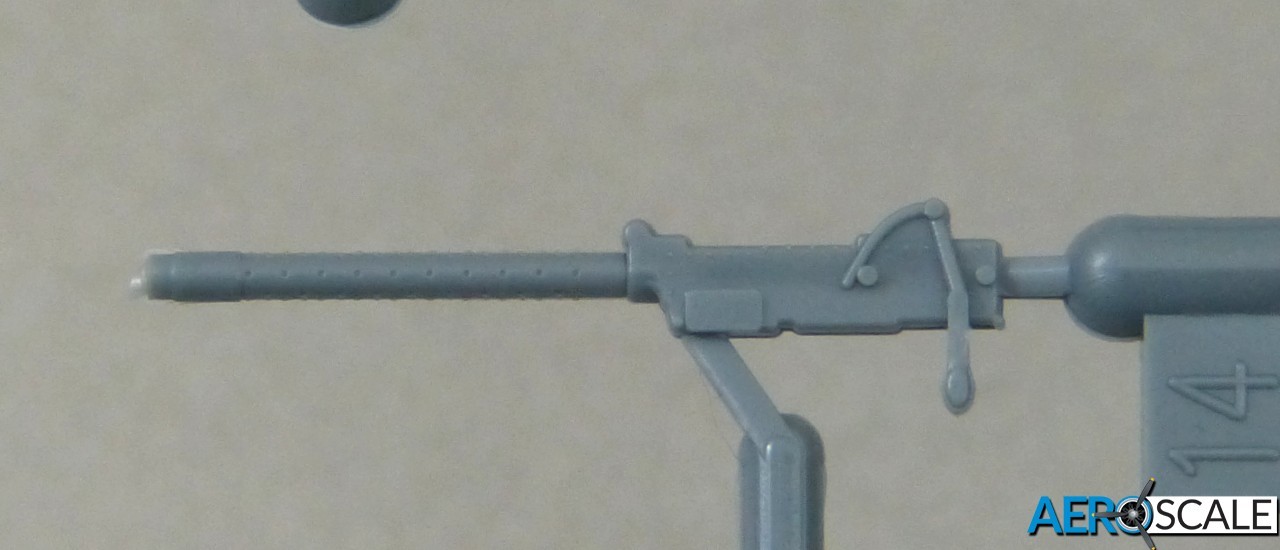
The engine is the same as before, very straightforward with just 6 parts, but nicely detailed - especially if you add some ignition wiring to busy it up.
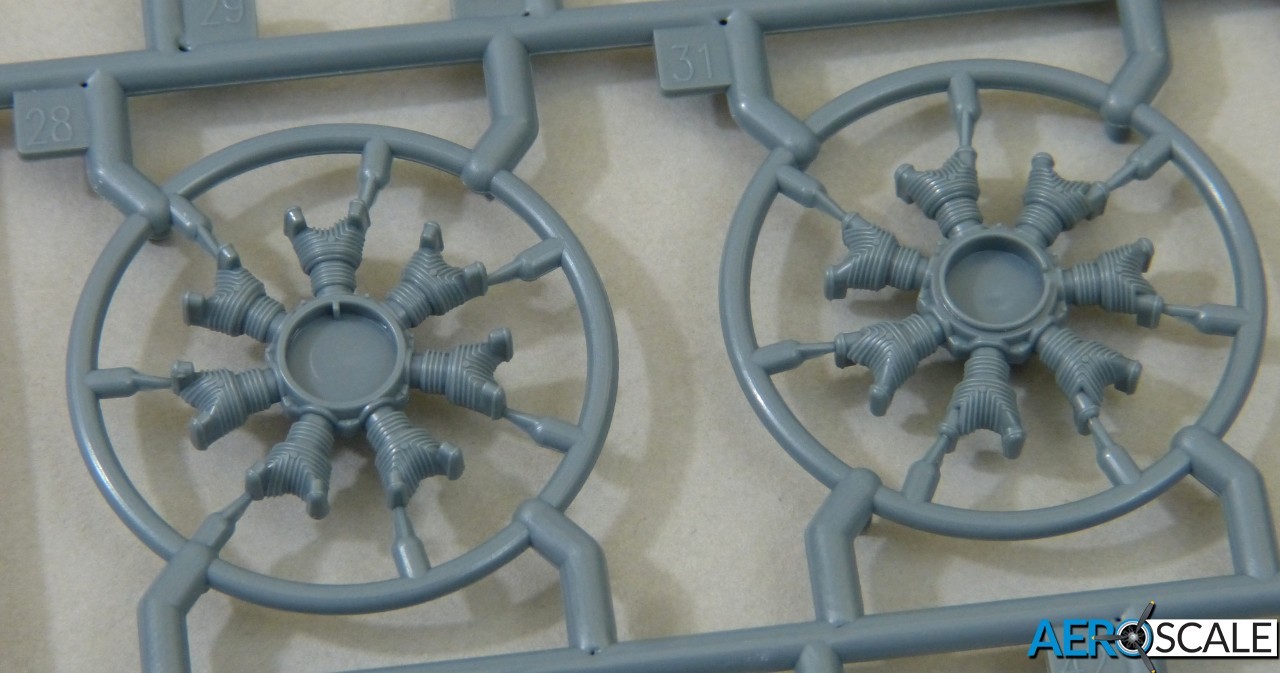
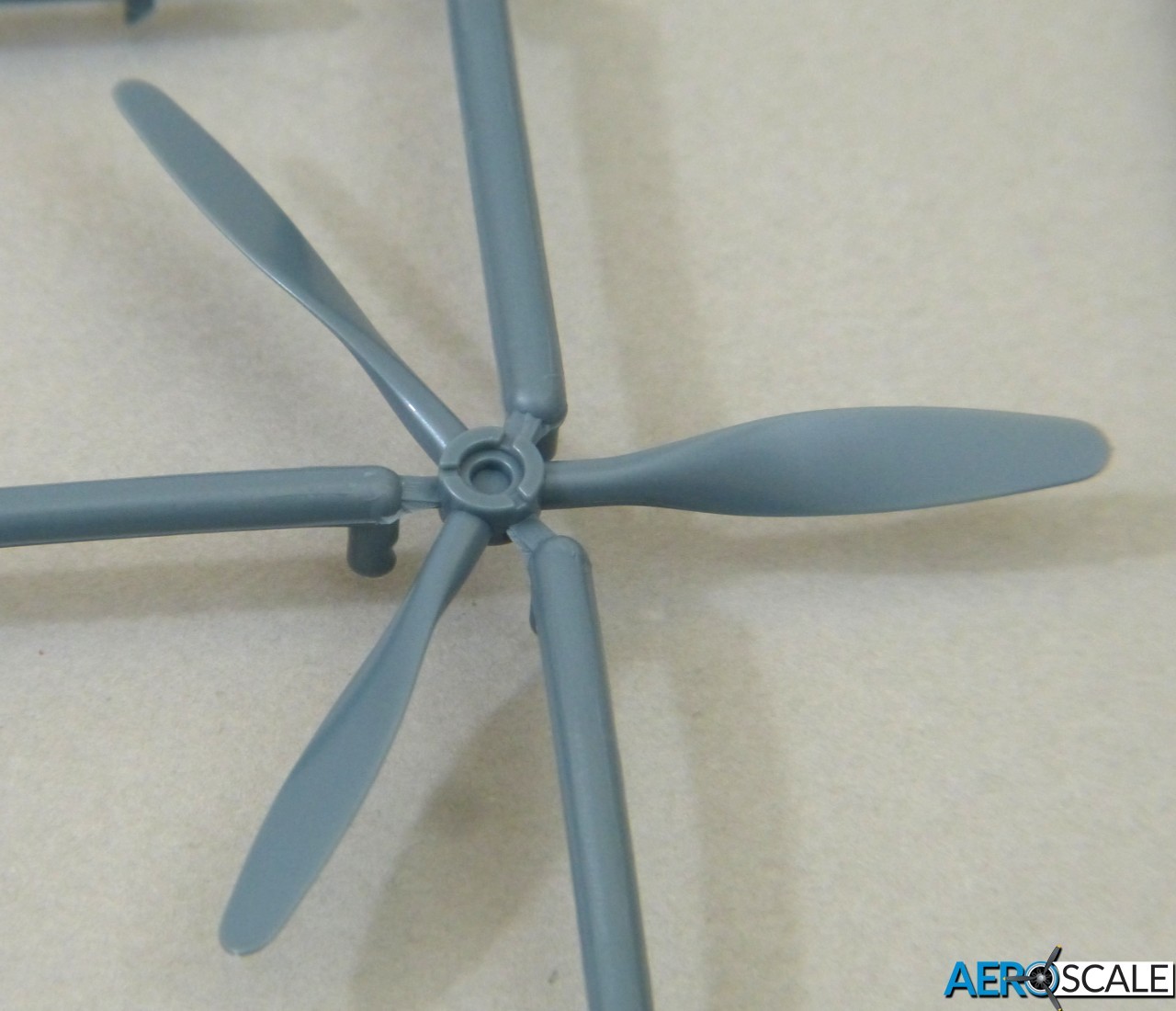

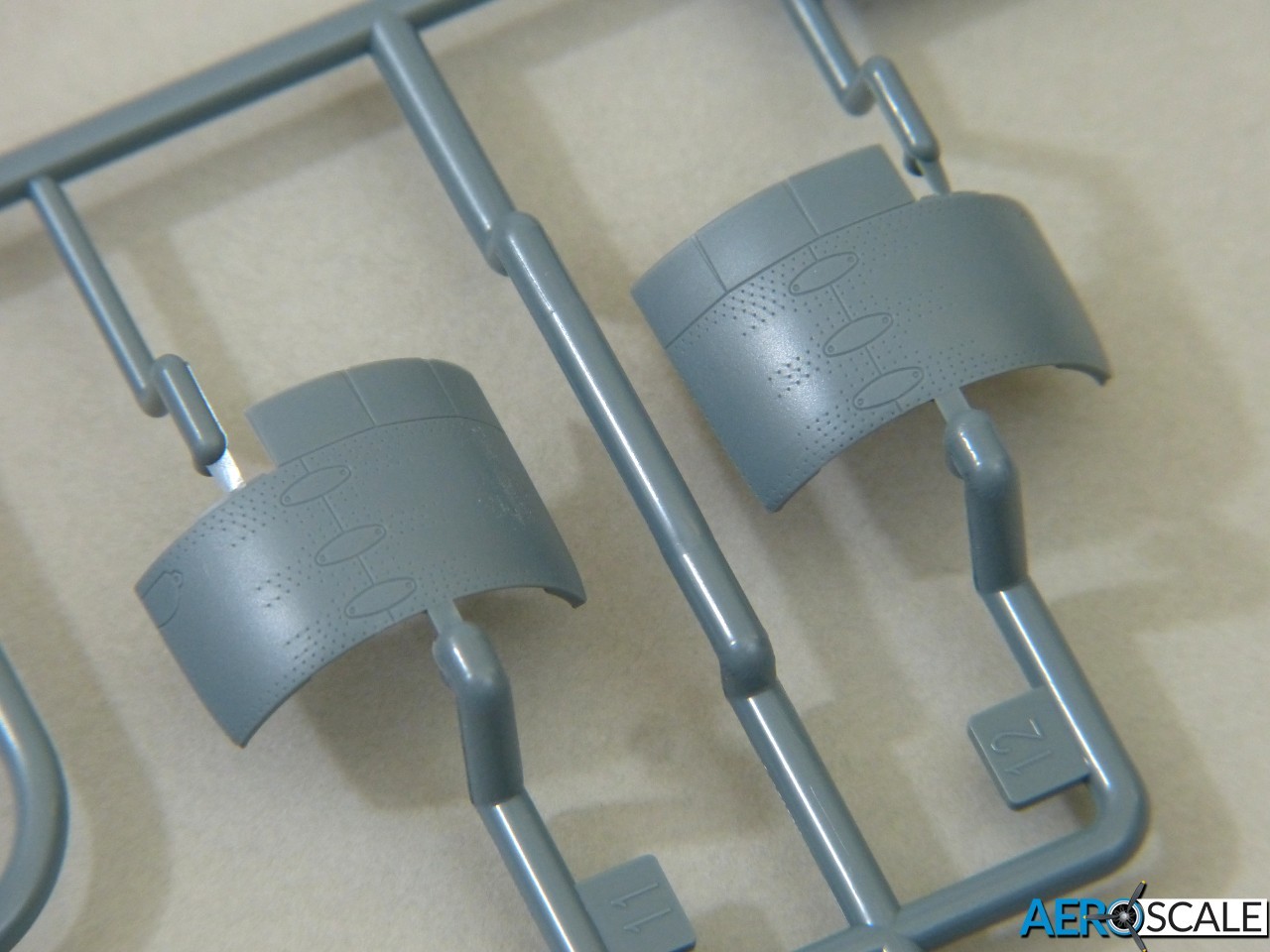


New to the Rufe is a set of small bombs and underwing racks. The bombs have etched fusing propellers and optional brackets for their fins, so it's a little odd that Eduard didn't offer etched fins too for a finer look.
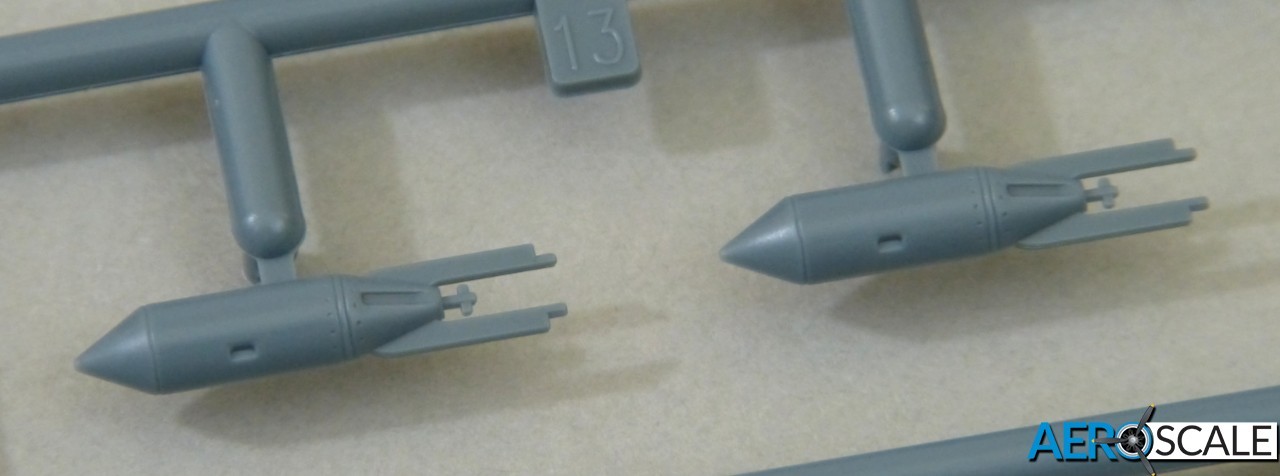
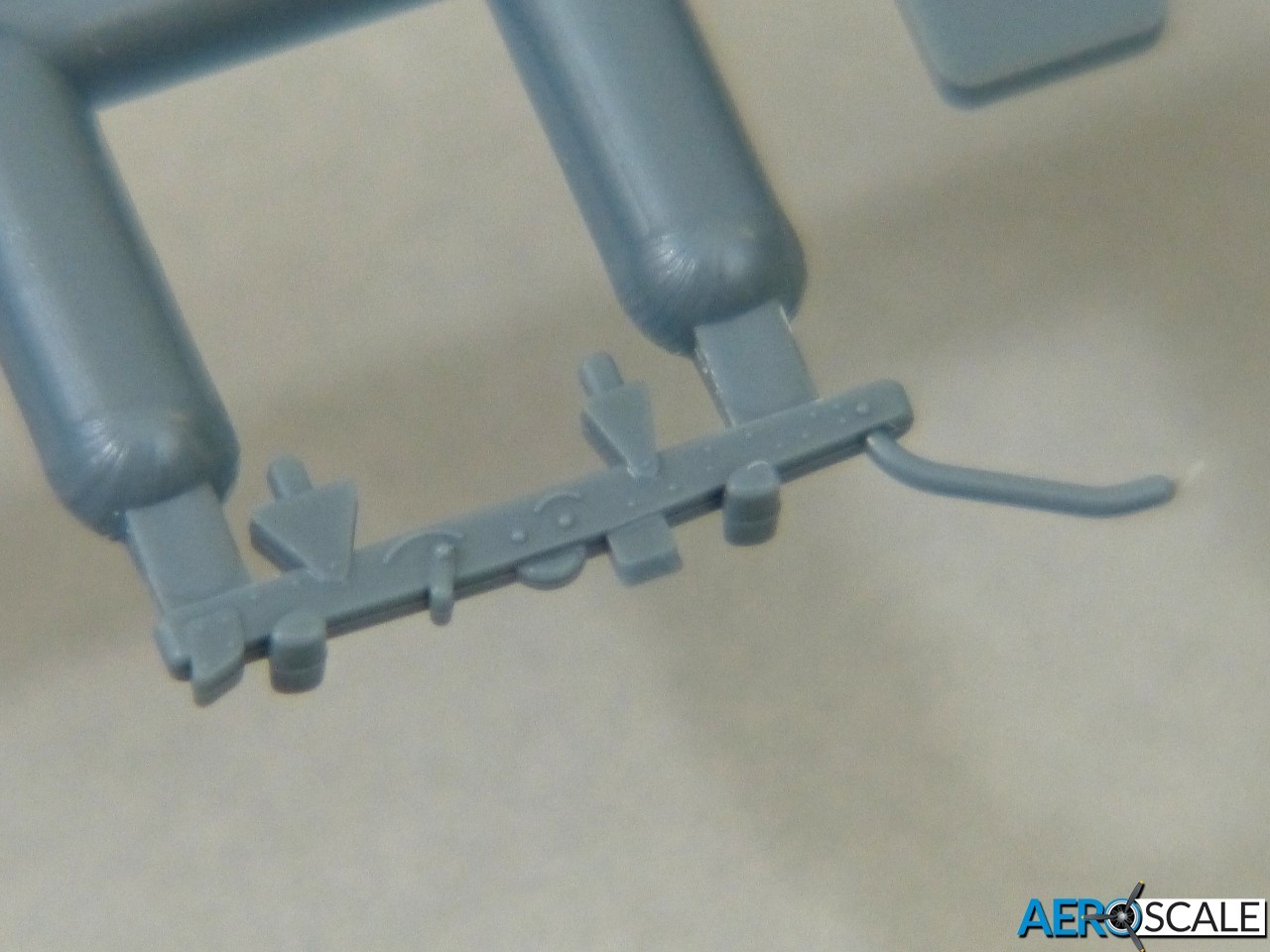
Of course the other big change beyond the Rufe's floats is its beaching dolley. This is neatly detailed and constructed from 18 parts. The wheels will rotate if you wish, and the front wheel can also castor to add a little extra interest.

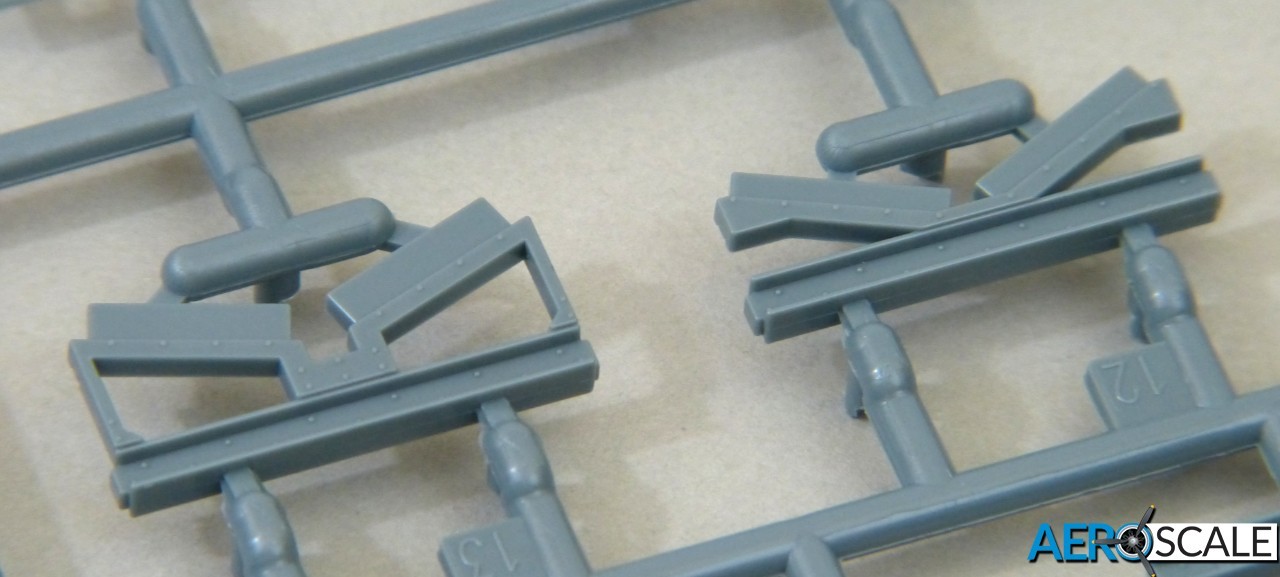
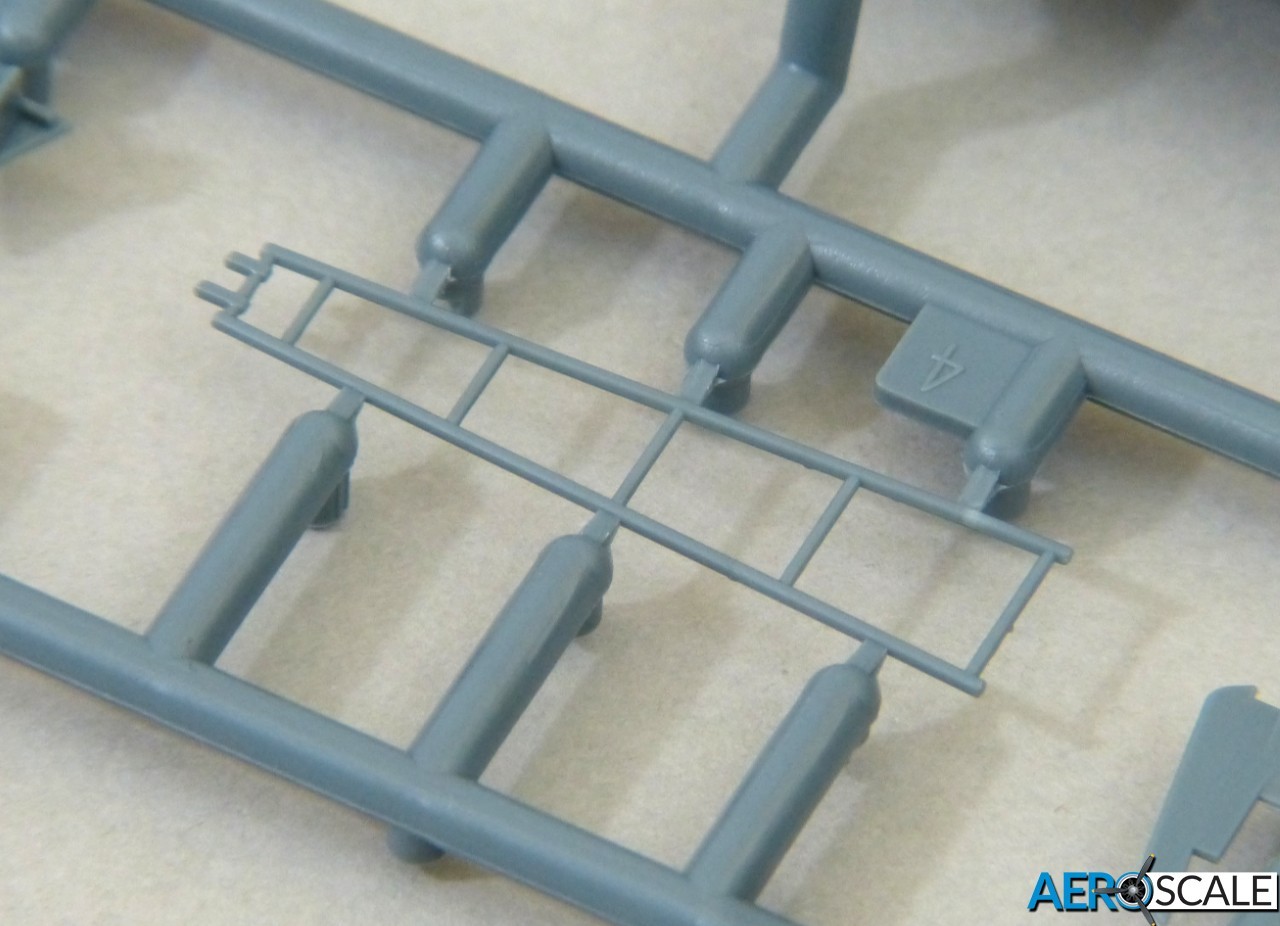
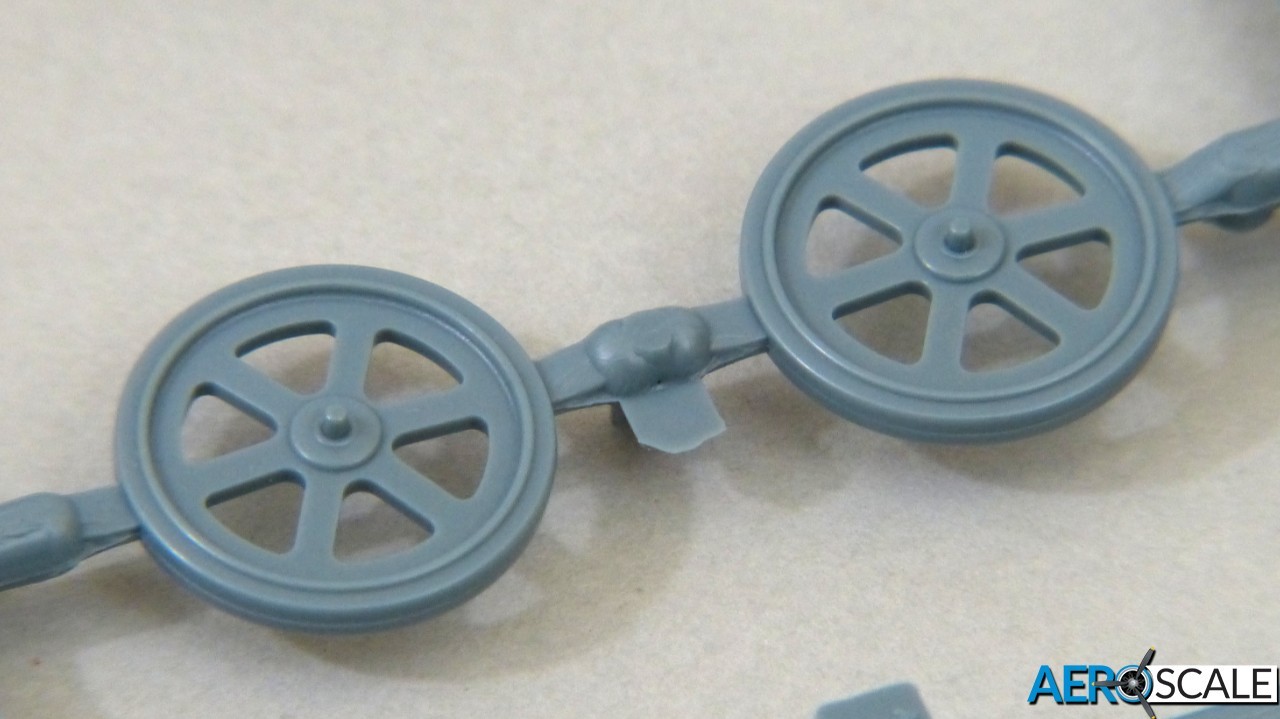
The clear parts are excellent, with crisply defined canopy frames and separate navigation lamp covers.

Instructions & Decals
Eduard provide a classy 28-page A4 booklet that begins with an excellent 4-page history of the Rufe that also details its camouflage and markings. The assembly guide is very clearly clearly illustrated, with the isometric drawings backed up by detail views where required. Colour matches are given for Gunze Sangyo paints throughout.
Decals are included for 8 colour schemes that offer some nice options for camouflage and markings:

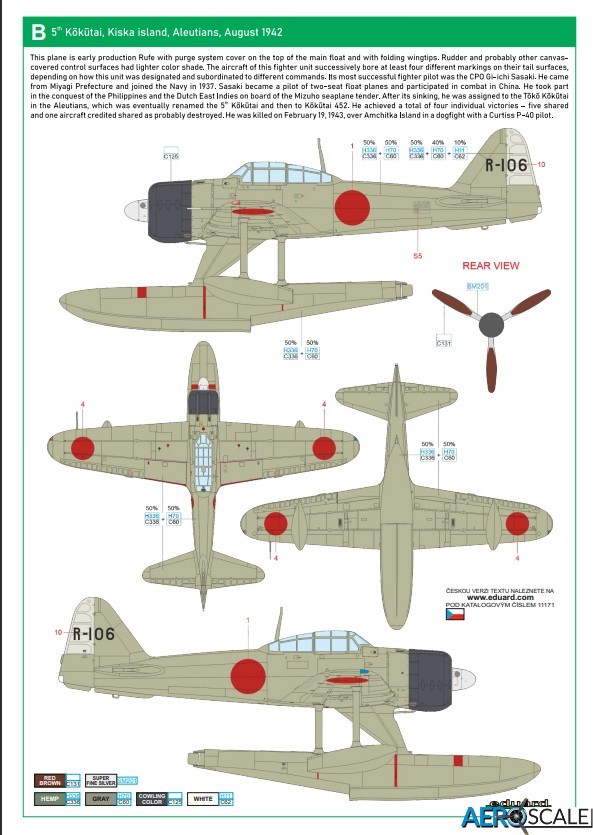
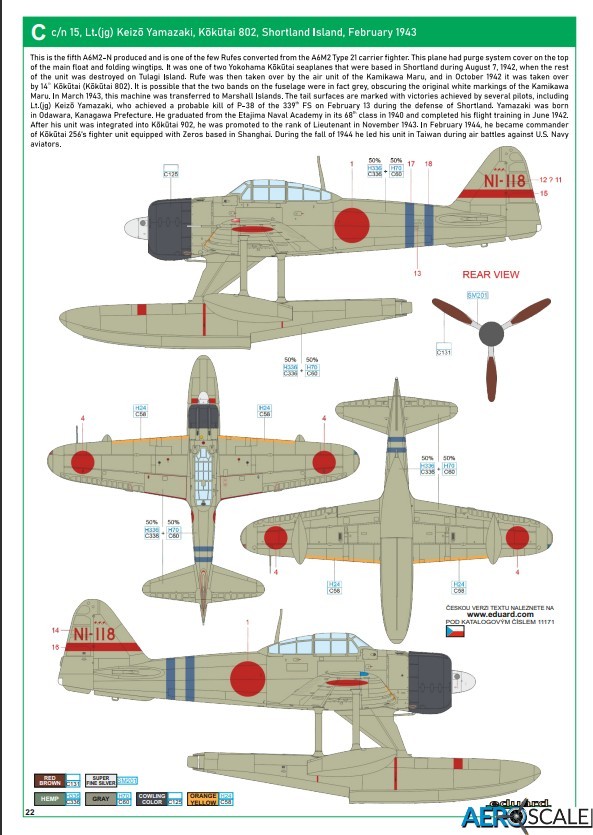
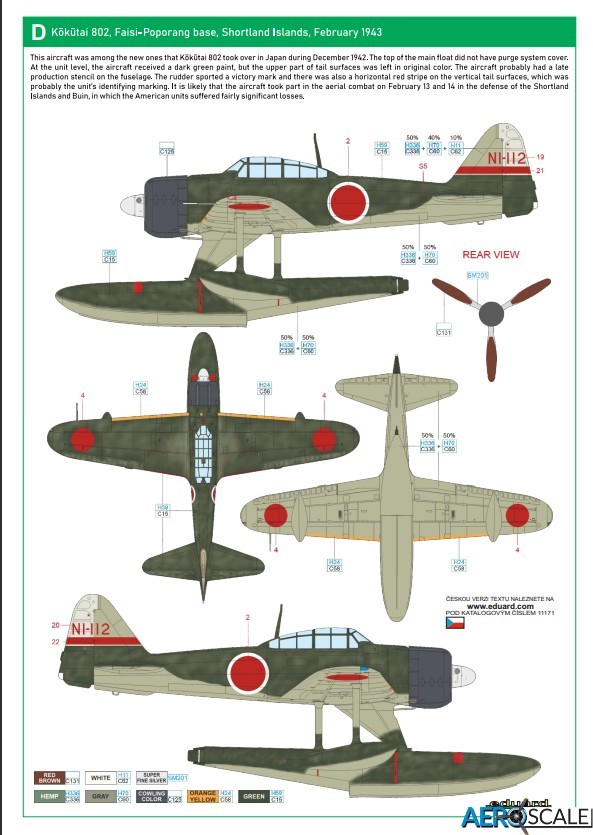




The decals themselves look pretty good, with a realistically dull red for the hinomarus. They are thin and glossy, and the registration is excellent. The yellow used for the tail codes looks a bit murky, and a magnifying glass reveals that the colours are printed as tiny dots - not my ideal technique. All the decals show a fair bit of excess carrier film, but experience with Eduard's recent decals has shown this snuggles down and disappears perfectly well - you just need to ensure it doesn't fold over on itself.
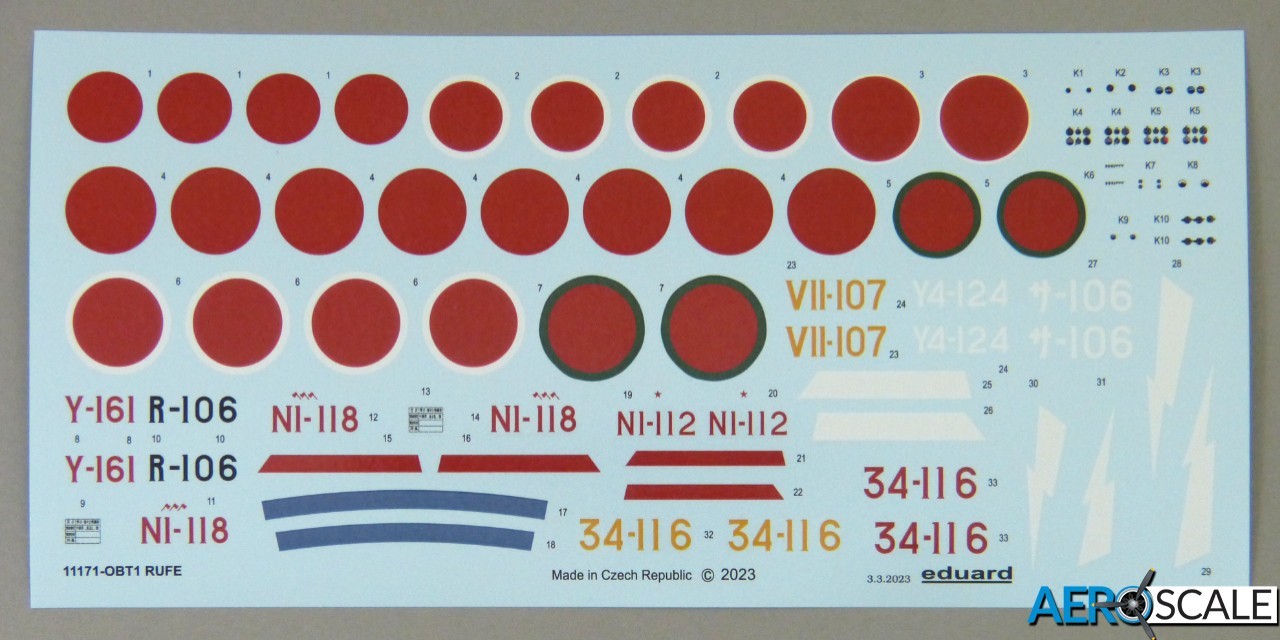
A comprehensive set of servicing stencils etc. is included, along a propeller warning and beaching dolley line-up stripes for the centre float.
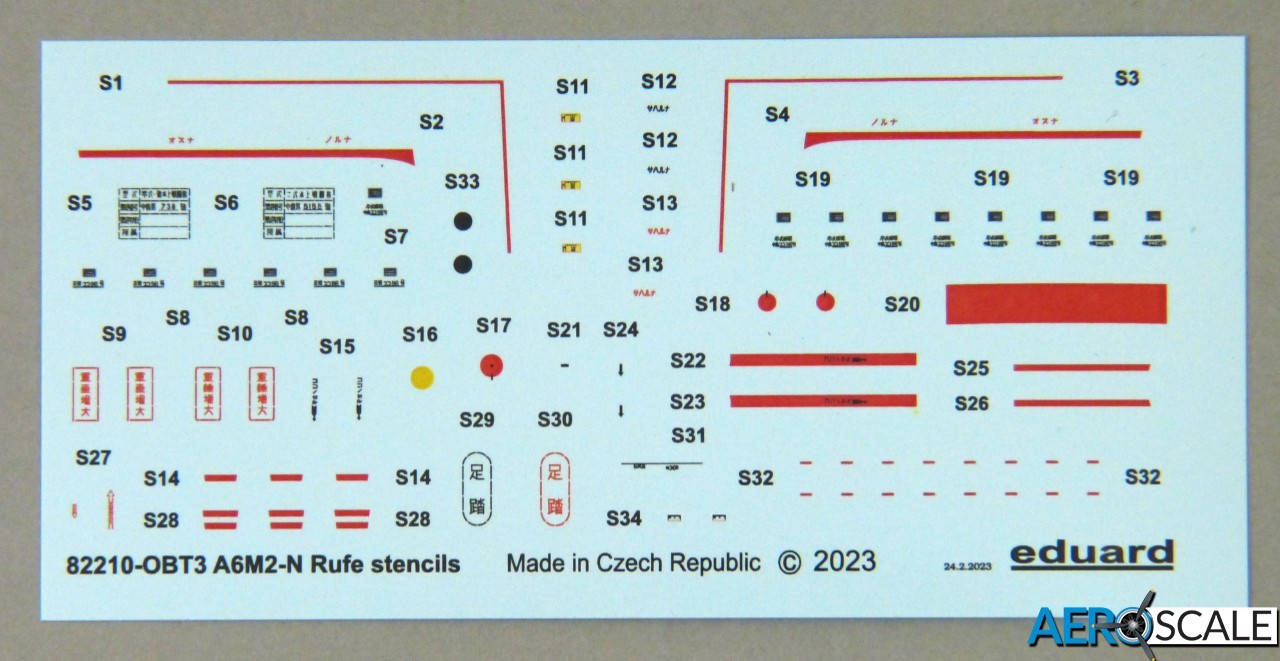
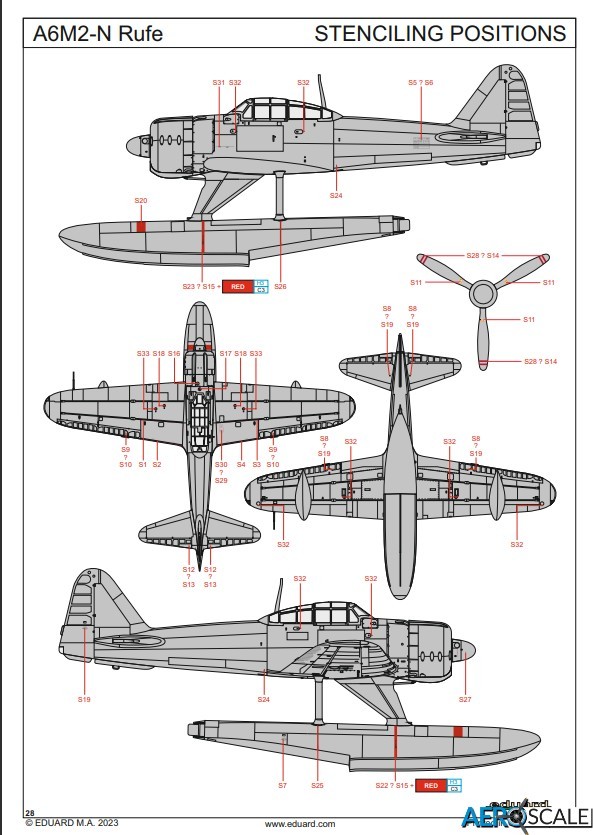
Conclusion
The Rufe is a very attractive aircraft - arguably the best-looking floatplane-fighter of WWII - and will stand out in any collection of standard Zeros. Eduard's 1:48 kit looks a real beauty and promises to go together without any problems. Obviously, this is a Hi-Tech boxing, so anyone unsure of working with photoetched parts may be advised to wait for a Weekend Edition which will surely follow soon.
Item #11171 is available now from - Price:
Many thanks to for the review sample.
Please remember, when contacting retailers or manufacturers, to mention that you saw their products highlighted here - on AEROSCALE











